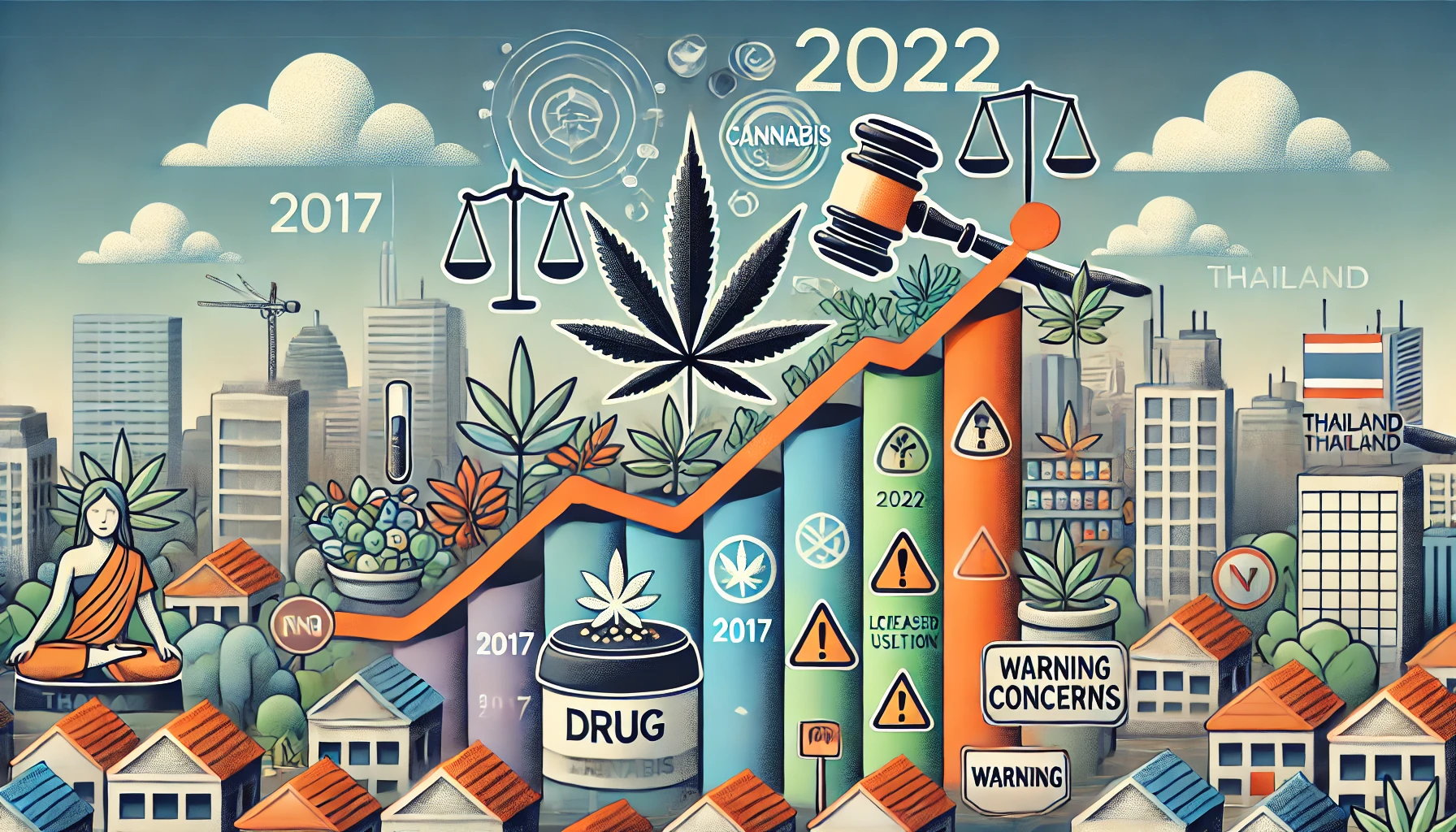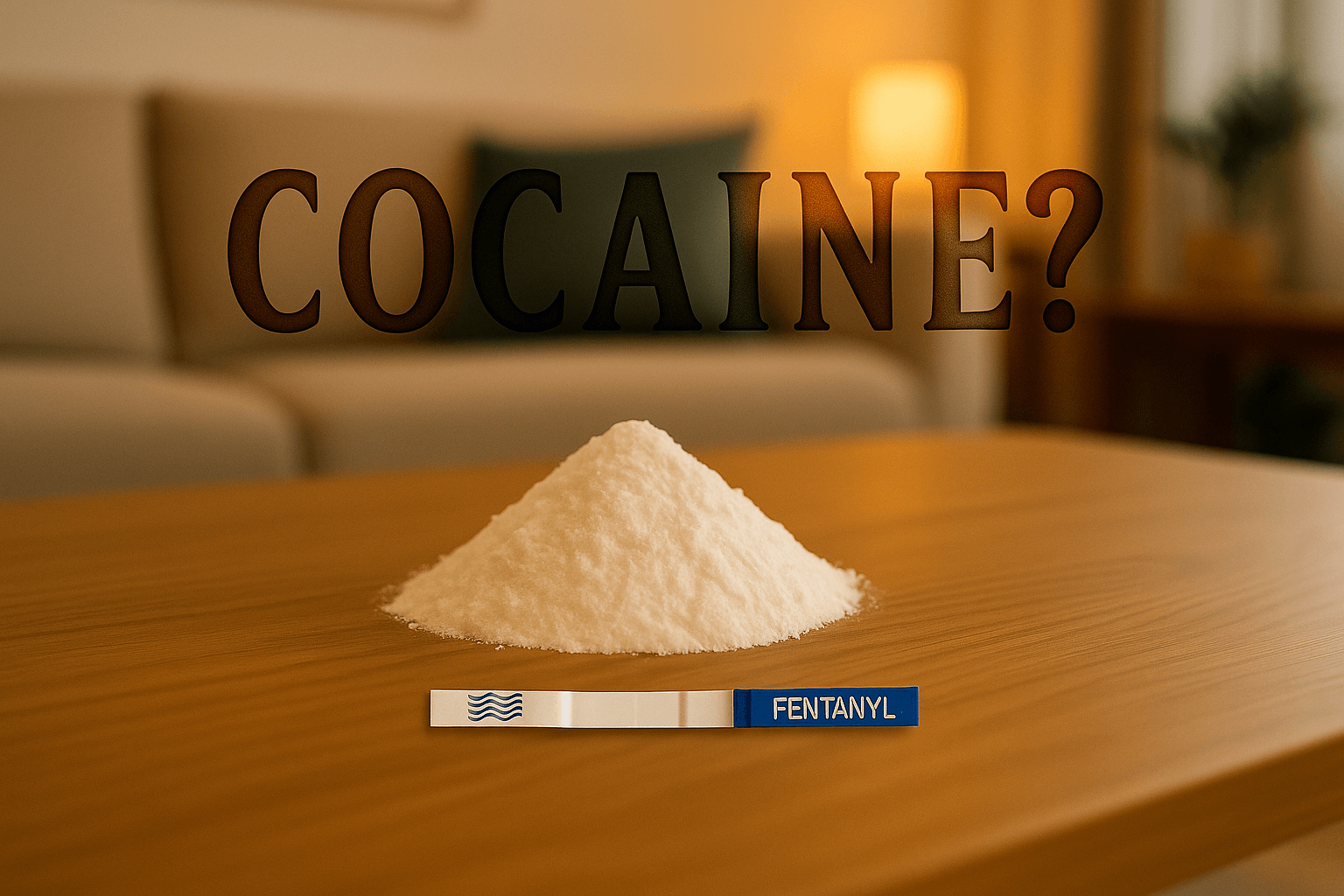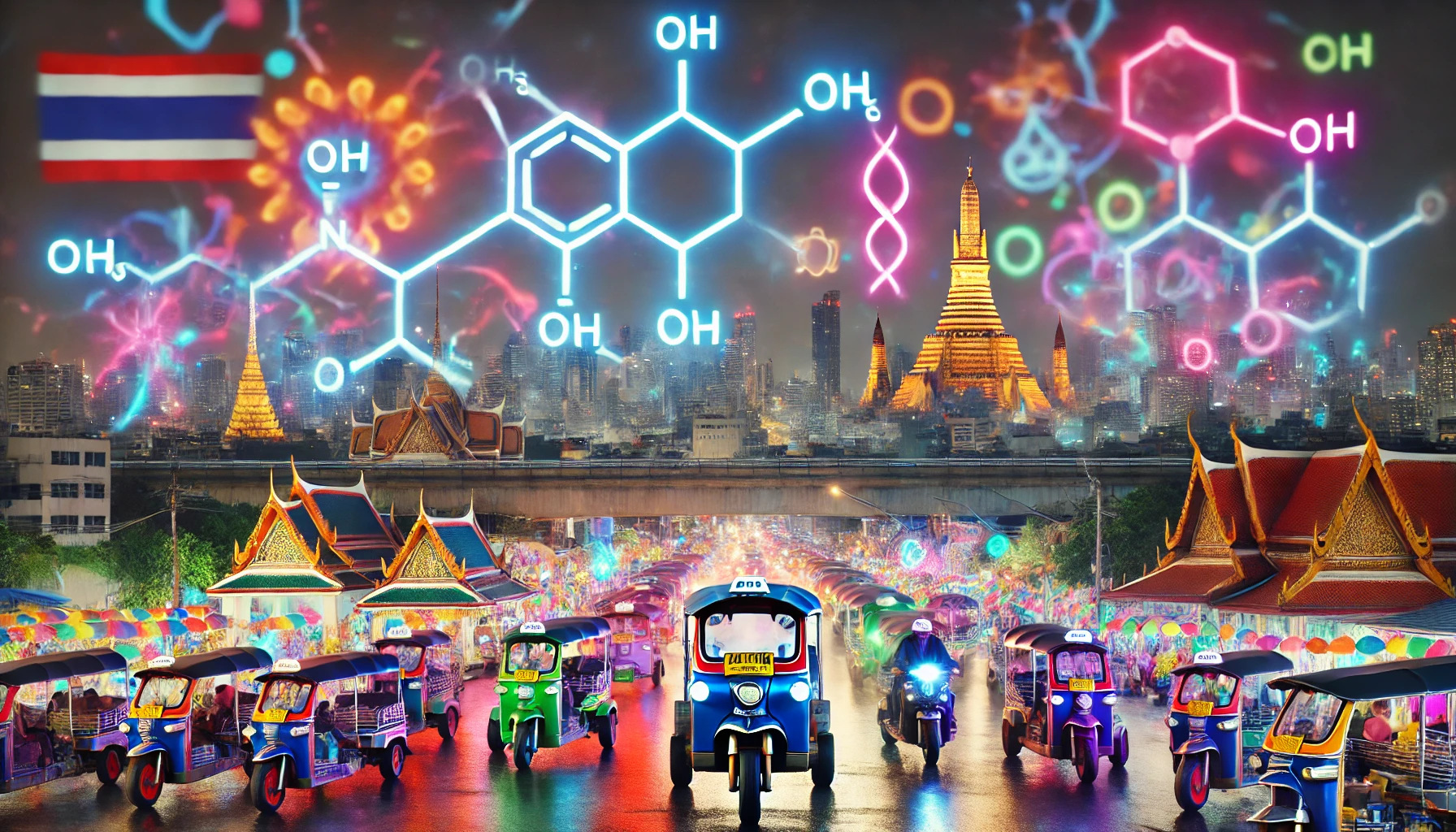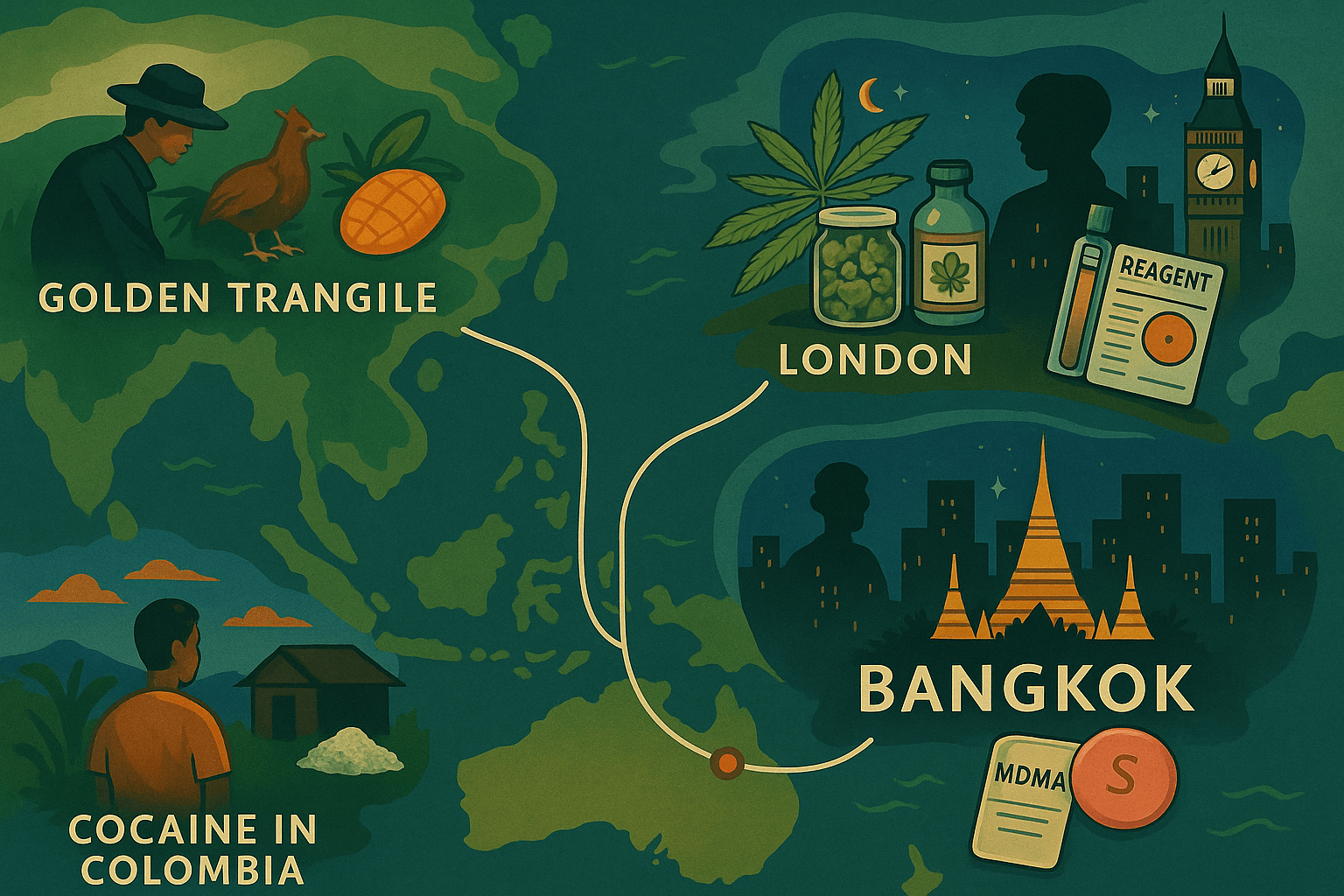Thailand has faced significant challenges related to drug use and trafficking over the past decade. The period from 2017 to 2022 has seen notable shifts in the patterns of drug consumption within the country. This article provides an overview of these trends, focusing on the most commonly used drugs, including methamphetamine, cannabis, ketamine, and new psychoactive substances (NPS).
甲基苯丙胺
2017-2020: The Rise of Methamphetamine
Methamphetamine, known locally as “yaba,” has long been the most widely used illicit drug in Thailand. Between 2017 and 2020, there was a significant increase in methamphetamine use, particularly among young people and rural populations. The drug’s availability increased as production surged in neighboring Myanmar, particularly in the Shan State, which is a major source of methamphetamine for the region.
2021-2022: Continued Dominance but Shifting Patterns
By 2021, methamphetamine use remained high, but there were signs of shifting consumption patterns. While the tablet form of methamphetamine (yaba) continued to be popular, there was an increasing use of crystal methamphetamine (“ice”). This shift may be attributed to changes in the drug’s availability, pricing, and the perceived potency of crystal methamphetamine compared to tablets.
大麻
2017-2019: Limited Use and Strict Enforcement
Cannabis use in Thailand was relatively limited during the early part of this period due to the country’s strict drug laws. However, cannabis still had a presence, particularly in urban areas and among younger users who sought it out despite the legal risks.
2020-2022: Legalization and Increased Use
A major turning point came in 2018 when Thailand became the first Southeast Asian country to legalize medical cannabis. By 2020, the legal landscape continued to evolve, leading to a significant increase in cannabis use for both medical and recreational purposes. The government’s efforts to promote cannabis as a cash crop and the relaxation of laws around its use led to broader acceptance and increased consumption across the country.
氯胺酮
2017-2020: A Niche but Growing Drug
Ketamine use in Thailand was relatively niche compared to methamphetamine, but its use began to grow steadily from 2017 to 2020. It was primarily used in party scenes and among younger demographics. However, the drug’s availability was often sporadic, leading to periods of increased and decreased usage depending on supply chains.
2021-2022: Increasing Concerns
The period from 2021 to 2022 saw increased concerns over ketamine use, particularly due to the rise in adulterated substances and the drug’s growing association with dangerous combinations, such as mixing with other synthetic opioids like fentanyl. This has led to heightened public health warnings and law enforcement crackdowns on ketamine trafficking.
New Psychoactive Substances (NPS)
2017-2019: Emerging Threats
New Psychoactive Substances (NPS) began emerging in Thailand around 2017, initially in small quantities. These substances, often designed to mimic the effects of traditional drugs, posed a new challenge for authorities due to their rapidly changing chemical compositions, which made them difficult to regulate.
2020-2022: Expansion and Regulation
By 2020, the use of NPS had expanded significantly, particularly in urban areas. The government responded with stricter regulations and enhanced monitoring, but the rapid evolution of these substances continued to outpace enforcement efforts. The increasing availability of NPS on the dark web and through international trafficking networks further complicated efforts to control their spread.
结论
The period from 2017 to 2022 was marked by significant changes in drug use patterns in Thailand. Methamphetamine remained the dominant drug, but the landscape saw new developments, particularly with the rise of cannabis following its legalization, and the growing concerns over ketamine and NPS. Understanding these trends is crucial for shaping effective public health strategies and law enforcement responses as Thailand continues to grapple with the challenges posed by drug use.
参考
- United Nations Office on Drugs and Crime (UNODC). Synthetic Drugs in East and Southeast Asia 2023.




